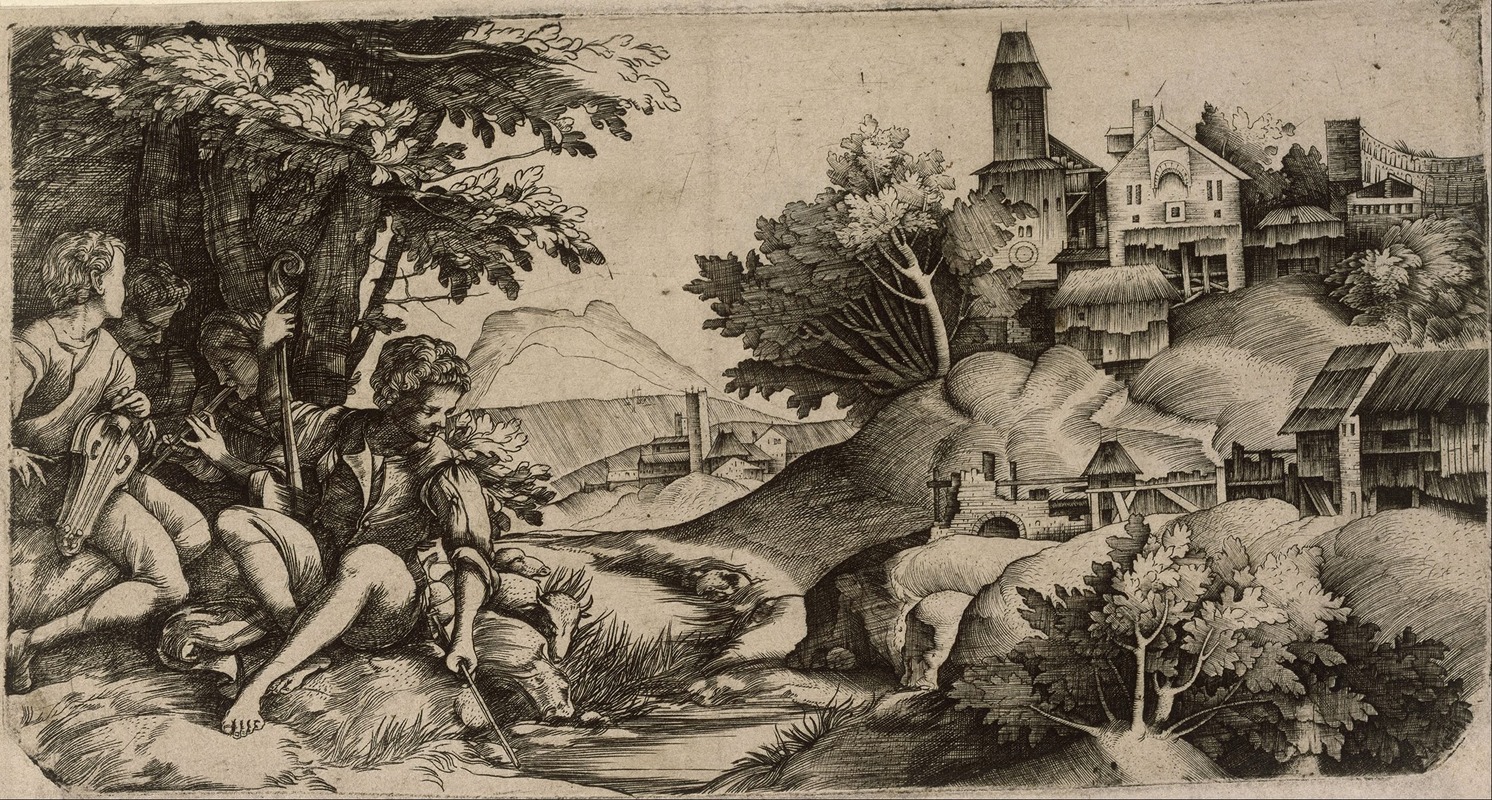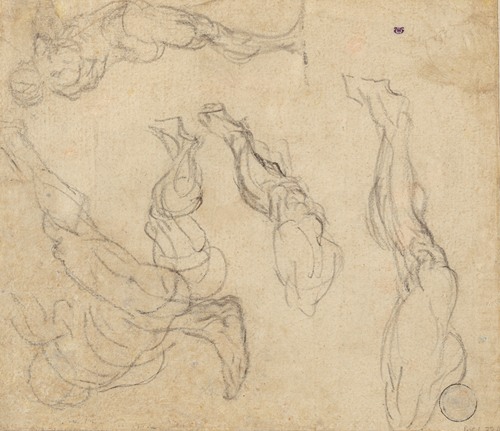
Giulio Campagnola was an Italian engraver and painter, whose few, rare, prints translated the rich Venetian Renaissance style of oil paintings of Giorgione and the early Titian into the medium of engraving; to further his exercises in gradations of tone, he also invented the stipple technique, where multitudes of tiny dots or dashes allow smooth graduations of tone in the essentially linear technique of engraving; variations on this discovery were to be of huge importance in future printmaking. He was the adoptive father of the artist Domenico Campagnola.
His early years are better documented than his adult life. He was born in Padua, then subject to the republic of Venice, and home to one of the three major European universities of the fifteenth century, the University of Padua. His father Girolamo was characterised by A. Hyatt Mayor as "a writer of some note, probably also an amateur artist, who belonged to what would now be called the intelligentsia"; letters by him in very good humanist Latin survive. According to Giorgio Vasari, Girolamo was also an artist "a Paduan painter and disciple of Squarcione", but this remark is the only evidence for that.
A number of sources, including Vasari, say that Campagnola was extremely accomplished in a number of artistic areas as a teenager. A letter written by a relative when he was fifteen describes him as a talented poet, singer and lutenist, able to read Latin, Greek and Hebrew, and skilled in painting, engraving and cutting gemstones. This letter was sent to the court at Mantua (where Andrea Mantegna was then the court artist) in an attempt to find him a position there. It is not clear if he ever went to Mantua, although (like nearly all contemporary Italian printmakers) his work shows the influence of Mantegna. One engraving is certainly based (perhaps not directly, as there was another print of it) on a drawing by Mantegna or his workshop.
In 1499 he appears (rather briefly) in the accounts of the court at Ferrara, another centre of North Italian printmaking. There is then no documentation until 1507, when another Paduan recorded lending him a painting and three copper engraving plates. This was in Venice, where most writers assume he was living by then. His engraving of an Astrologer is dated 1509 on the plate, and the only later record comes from the will of Aldus Manutius in 1515, when Manutius asks that he be given the work of cutting the moulds for, or perhaps designing, some printing type. At the period he also became a friend of the humanist and alchemical poet Giovanni Aurelio Augurello. Depicting his experiments with artificial blue pigments in his Chrysopoeia (Venice 1515) Augurello refers to Giulio ("meus Iulius") as the one person who at least is somehow profiting from the vain quest for gold.
After this there is no further record, but an engraving plate that he had left half-finished was completed by his adopted son c. 1517, so he is assumed to have died by then at the latest, probably in Venice. He had adopted Domenico Campagnola, apparently an orphan of German parentage, in about 1512. Another source claimed that he took holy orders, but this is now discounted.
Fortunately, for those seeking to reconstruct his career, he was in the habit of signing, though not dating, his engravings, often with his full name and Antenoreus, a slightly showy learned reference to the Trojan whom Virgil designated the founder of Padua.

